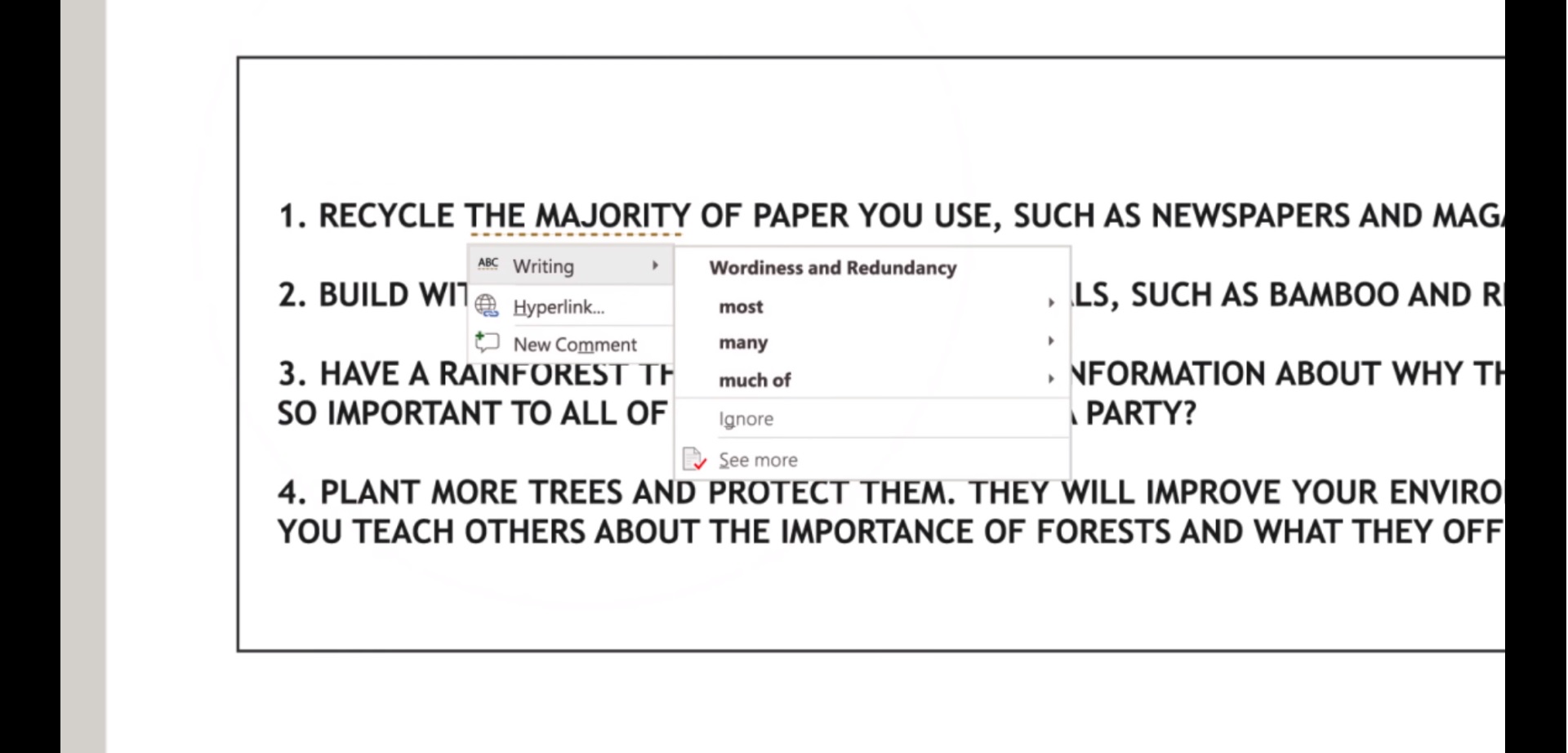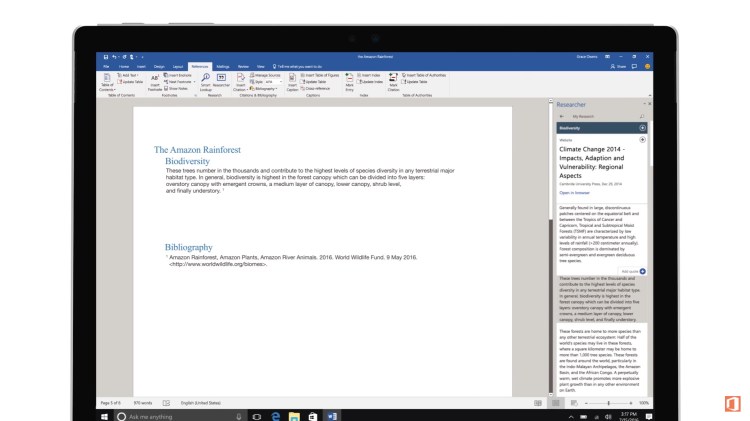Microsoft today is announcing new features that are coming to its Word, PowerPoint, and Outlook applications.
One new feature in Word, called Editor, is particularly notable because it will help users improve their writing by suggesting changes, just like a human editor. The feature picks up on issues like wordiness, non-inclusive language, differences in tone, lack of consistency in hyphenation and other areas, jargon, slang, passive voice, clichés, and use of the double negative.
“We wanted to go far beyond the current spelling and grammar capabilities and focus more on what you did wrong and how it should be fixed,” Microsoft Office senior product marketing manager David Alexander told VentureBeat in an interview. Editor will start making writing suggestions next month, and in the fall, Editor will start flagging things with squiggly lines underneath text in Word, Alexander said.

Above: The Editor feature coming to Microsoft Word.
With its use of machine learning, both locally and online, Editor is a good example of Microsoft’s efforts to improve people’s productivity, not unlike the Cortana virtual assistant in Windows 10 or the Sway presentation app that automatically arranges content in an aesthetically pleasing fashion.
Alongside Editor, Word is also getting a feature called Researcher, which will give users a way to find and incorporate additional information from outside sources. This makes it easy to add a quote and even generate proper academic citations for use in papers. Explicit content won’t appear in search results, so you won’t accidentally import it into your work. And you won’t find yourself in some random Wikipedia rabbit hole, because the search for additional information happens in a panel on the right side of your Word document.
“It’s not just web search,” Alexander said. Researcher draws from the Bing Knowledge Graph to provide information from books and media articles, and over time the feature will add more sources, like the Stanford Encyclopedia, Alexander said. The feature won’t work offline.
The launch of Researcher follows Google’s introduction of Google search into Google Docs. Researcher is available today in Word 2016 on Windows desktops for people participating in the Office Insider program. It will become generally available for all Office 365 subscribers later, and it will come to more platforms over time.
https://www.youtube.com/watch?v=yMnD47lnFQk
Microsoft PowerPoint is getting a feature called Zoom. It gives users a way to easily navigate right to the first slide in a section. It’s perfect for the Q&A period in your presentation — you’ll no longer have to hit the back or forward button a bunch of times in order to bring up just the right slide.
To make one of these Zoom slides, just select Zoom from the Insert ribbon in PowerPoint. For the Zoom summary, you’ll be asked to select the first slide for each subject. You don’t need to worry about designing the slide or the transition style. Of course, you can customize the slide if you’d like.
This feature can make it easier for people to digest the presentation if they’re not present for it and they just have the slide deck to look at, Alexander said. Zoom is now available for Office Insiders in PowerPoint 2016 on Windows desktops, and it will come to other platforms later.
In Outlook, the Focused Inbox feature, which hides less-important email and sticks it in the Other folder, is finally coming to Windows, Mac, and the web. Until now, it’s only been available on Android and iOS. Now these inboxes will be consistent across all Outlook users’ devices.
Focused Inbox learns from users’ behaviors over time. But it’s also possible to manually move senders to Focused Inbox or Other.
https://www.youtube.com/watch?v=M40ha4fnKbU
Microsoft is starting to roll out Focused Inbox in a First Release build for enterprise customers, Alexander said.
Also in Outlook, @mentions are coming to Outlook 2016 for Windows and Mac, first for Office Insiders. They’ve already come to Outlook on the web when you’re writing an email — next, they’ll arrive on Android and iOS.
For more on the new Office features, see the blog post from Kirk Koenigsbauer, corporate vice president for the Office 365 client apps and services team at Microsoft.


